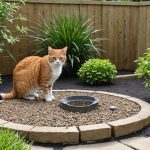Understanding Feline Leukemia Virus (FeLV)
Feline Leukemia Virus (FeLV) is a significant concern when it comes to cat health. This virus affects a cat’s immune system, making it more vulnerable to infections and diseases. Understanding FeLV is crucial for any cat owner hoping to maintain their pet’s well-being.
FeLV primarily spreads through close contact with infected cats, as the virus is present in saliva, blood, and, to a lesser extent, urine and faeces. Common symptoms include weight loss, fever, and lethargy, among others. These symptoms may not appear immediately, sometimes taking weeks or months to develop once a cat contracts the virus.
A lire également : Creating an enriching and secure outdoor sensory garden for visually impaired cats
FeLV poses numerous health risks, such as anaemia, respiratory infections, and an increased likelihood of developing certain types of cancer. Given these risks, cat owners must prioritise FeLV awareness, recognising symptoms early and seeking veterinary care promptly.
It’s vital to keep FeLV-positive cats in a safe environment to minimise stress and exposure to potential infections. By doing so, their quality of life can be improved despite the challenges posed by the virus. Providing enrichment activities and a stable routine can support both their physical health and emotional well-being.
A lire aussi : Guide to a happy transition: top tips for easing your cat into their new home
Key Considerations for Outdoor Spaces
Designing a cat enclosure for FeLV-affected cats requires a thoughtful approach to ensure maximum outdoor safety. These enclosures should include features that prevent escape and protect against potential threats. Consider using sturdy materials like metal or treated wood, which deter predators and resist deterioration, ensuring the safety and longevity of the space.
When selecting materials, focus on those that facilitate easy cleaning and reduce contamination risks. For instance, vinyl mesh on the enclosure’s sides can offer visibility and airflow while also being simple to disinfect. Flooring should be constructed from non-porous substances to prevent moisture retention and potential breeding grounds for parasites.
To bolster safety, implement strategies that protect the space from other animals and natural elements. Secure the perimeter with a barrier that extends underground to prevent dig-ins. Adding a roof can shield cats from birds of prey, while also offering a protective cover from rain or excessive sunlight.
Additionally, integrate climbing surfaces and shaded areas to enrich the environment, providing both stimulation and comfort. These measures not only safeguard the well-being of FeLV-affected cats but also allow them to enjoy fresh air securely.
Creating a Stimulating Environment
Enriching the lives of cats, particularly those with FeLV, requires thoughtful design of their surroundings. Cat enrichment can transform ordinary spaces into adventure-filled arenas that cater to both physical and mental well-being.
Interactive Elements for Cats
Incorporating interactive elements is essential. Toys that mimic prey encourage natural hunting behaviours. Toys equipped with feathers or bells can offer indoor cat enrichment. These enrichments promote exercise, reduce anxiety, and prevent boredom, keeping your feline friend engaged.
Natural Exploration Opportunities
Outdoor activities are equally vital. Simulating a cat’s natural environment can be accomplished with minimal effort. Consider setting up a secure outdoor enclosure. This allows cats to enjoy the benefits of fresh air and sunlight without exposure to potential dangers. Such environments also assist in relieving stress and reducing undesirable behaviours.
Safe Climbing Structures
Vertical spaces provide perfect outlets for cats’ instinctive need to climb. FeLV-friendly features, like stable scratching posts and multi-level platforms, support exercise and exploration. Designing with sturdy materials ensures safety while encouraging cats to leap and perch at various heights. Integrating these structures indoors allows for year-round enrichment, regardless of the weather.
Creating a vibrant environment tailors to your cat’s instinctual needs, enhancing their living space while ensuring safety and enjoyment.
Health Management and Behavior Considerations
Managing the health and behavior of cats affected by FeLV requires careful observation, particularly when they are in outdoor settings. These felines benefit from monitoring health signs such as energy levels and appetite which can be indicators of their overall well-being. It’s vital for cat owners to integrate safe play strategies to ensure both physical health and mental stimulation without risking exposure to infectious environments.
Outdoor adventures should be limited, supervised, or even replaced with engaging indoor activities such as interactive toys or puzzle feeders. This approach not only supports cat welfare by preventing potential exposure to parasites or illnesses but also encourages healthy exercise and cognitive stimulation.
Understanding FeLV involves recognizing behavioral changes that might occur. Cats with FeLV may exhibit altered activity levels, reduced social interaction, or increased aggression. By being vigilant about these changes, owners can adjust their care strategies to better meet their cats’ evolving needs. Prioritizing behavioral health, these methods ensure that FeLV-positive cats enjoy a fulfilling, albeit cautious, lifestyle that accommodates their specific health requirements, ultimately enhancing their quality of life.
Resources for Cat Owners
Navigating feline leukemia can be challenging, but there are numerous resources for cat owners to access both information and support. Various organizations specialize in feline leukemia, providing essential services and support networks.
One of the key resources is community networks, where cat health support is readily available. These communities often include forums where cat owners can discuss their experiences and share advice on managing FeLV. They offer emotional support and can connect you to others who understand the journey. Having a strong support network can make a significant difference in handling the emotional and practical aspects of caring for a FeLV-positive cat.
In addition, many organizations provide access to valuable educational materials and veterinary advice, guiding you on best practices and management strategies for FeLV. Some offer workshops, webinars, and easily accessible online resources, ensuring that cat owners can stay informed about the latest in FeLV care and management strategies.
Whether through community networks or direct communication with veterinary professionals, these resources empower cat owners, fostering a well-rounded understanding and approach to feline leukemia care. They are invaluable in promoting both the health of your pet and your own peace of mind.











